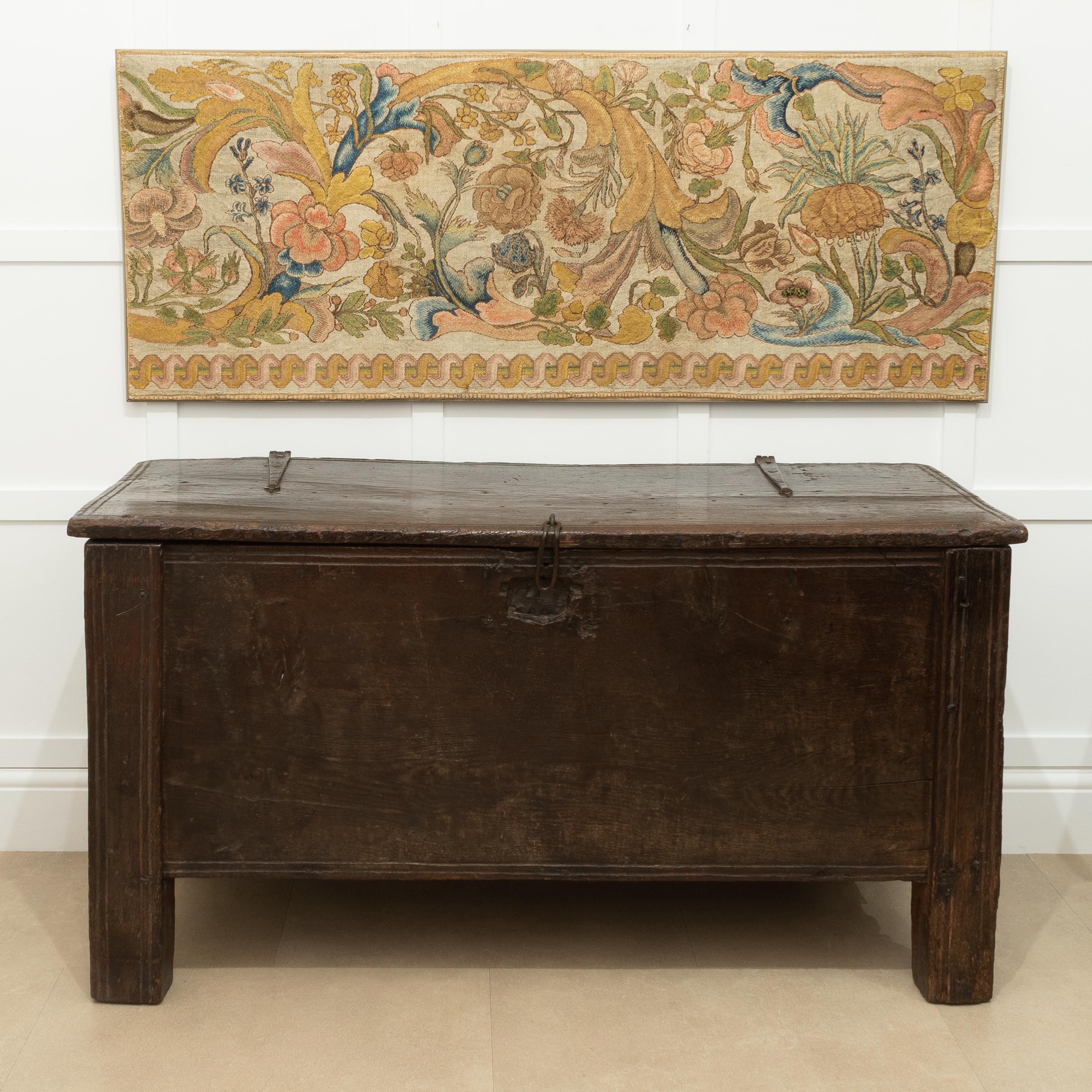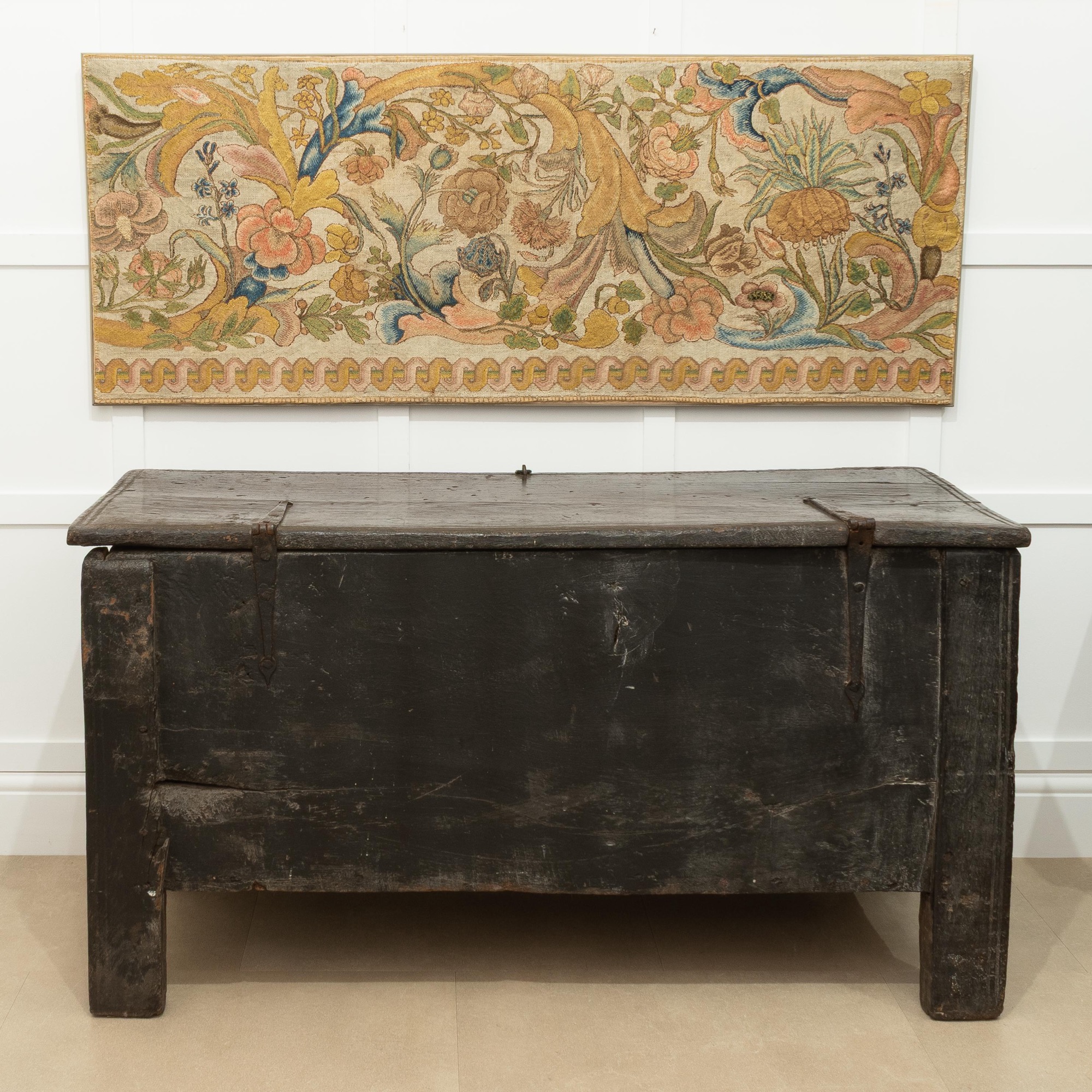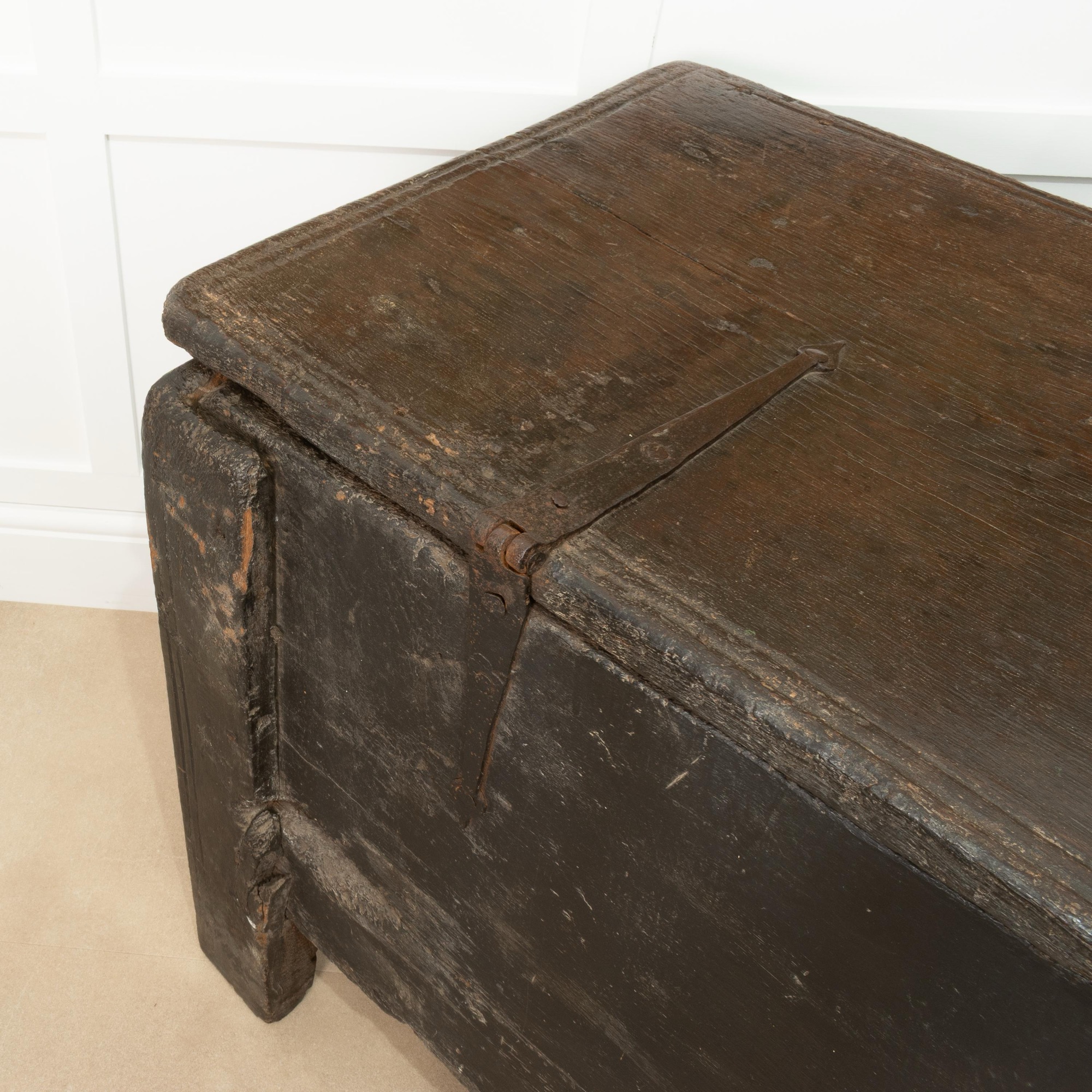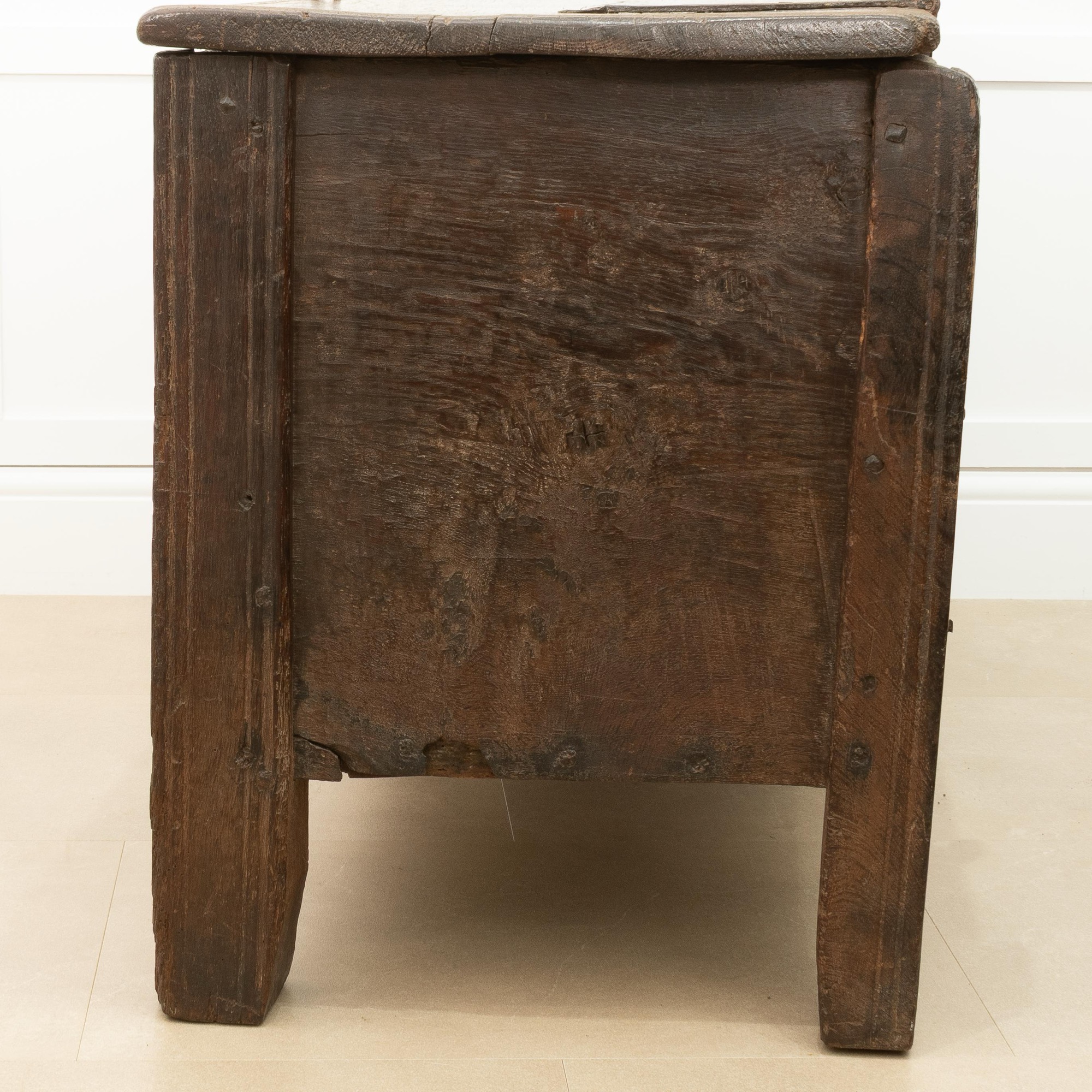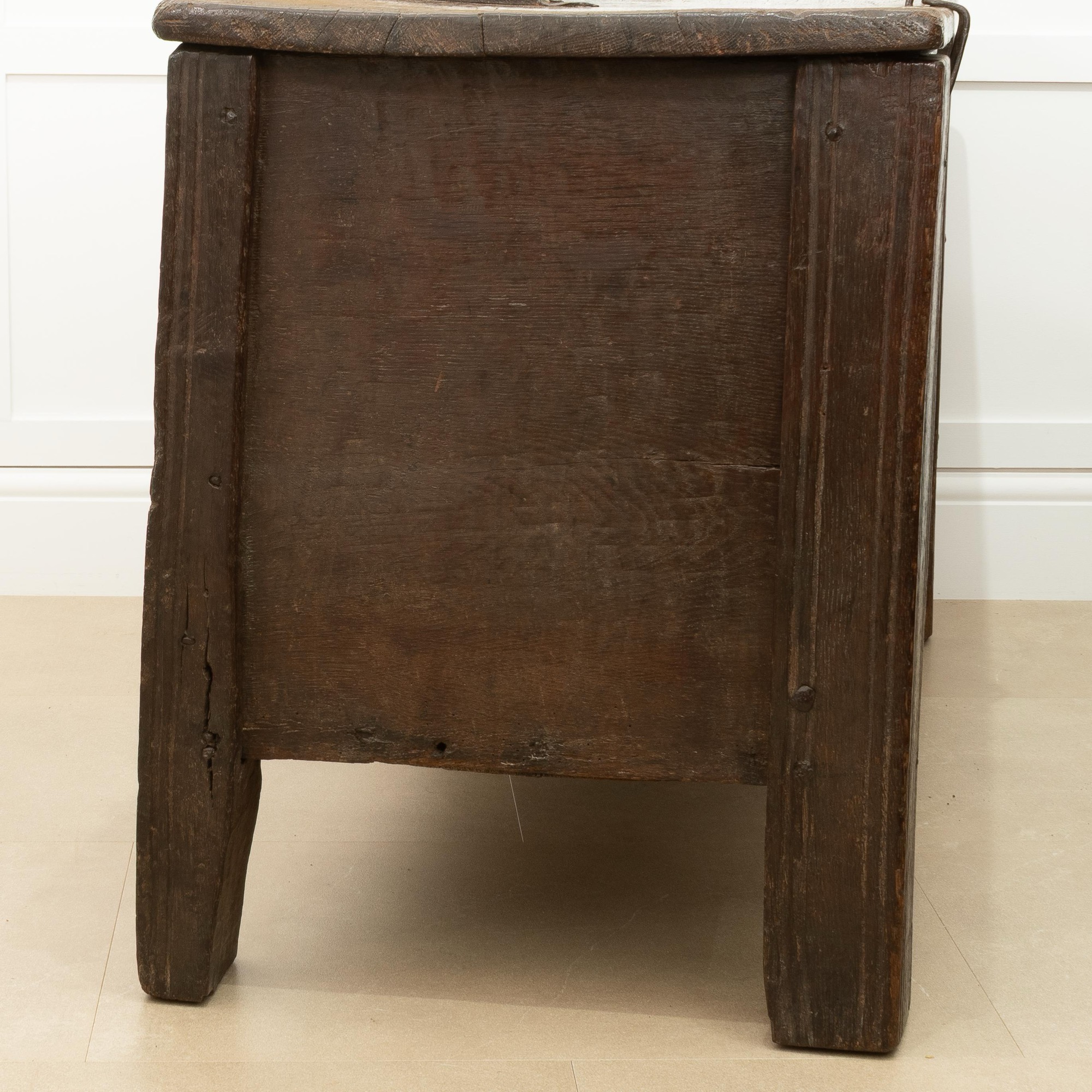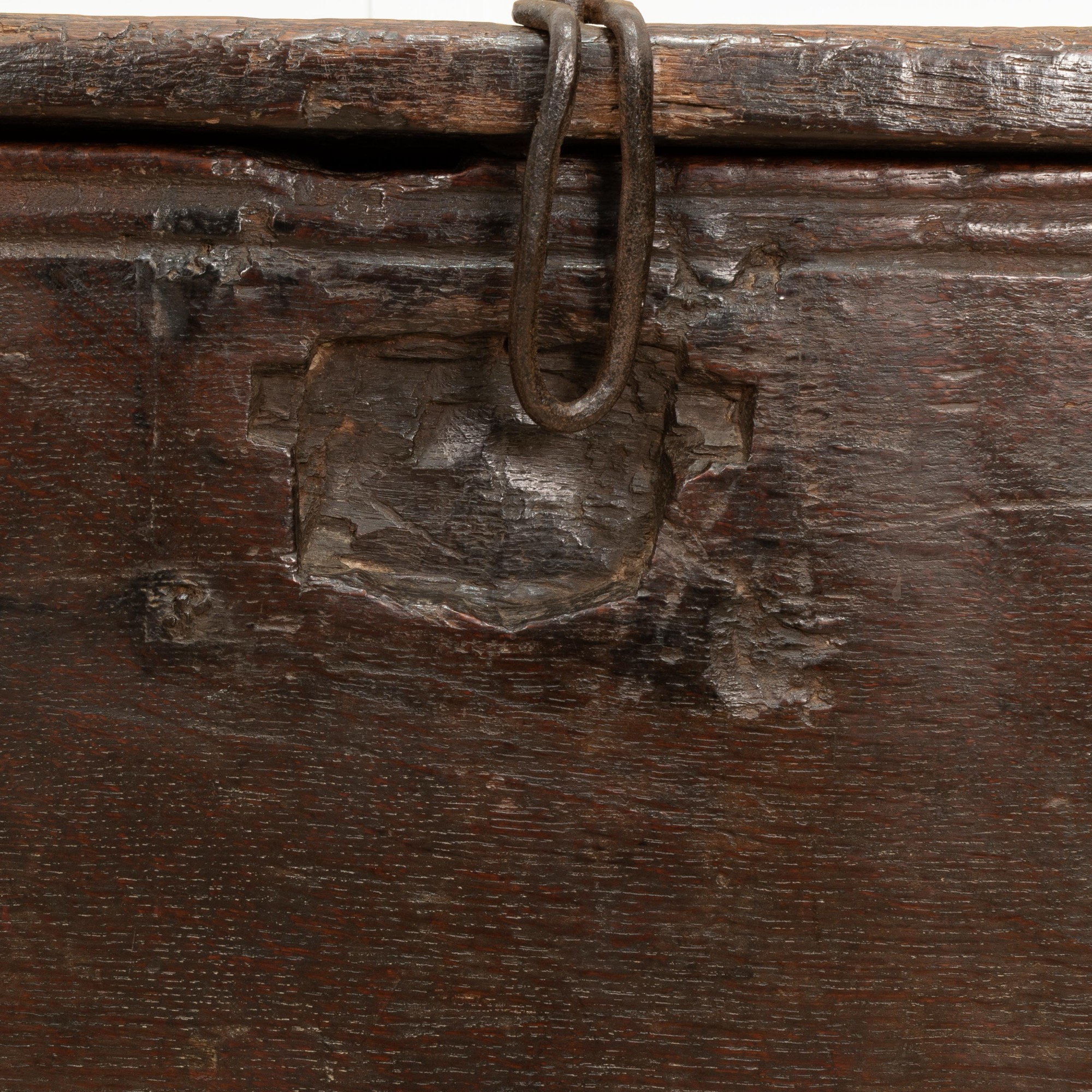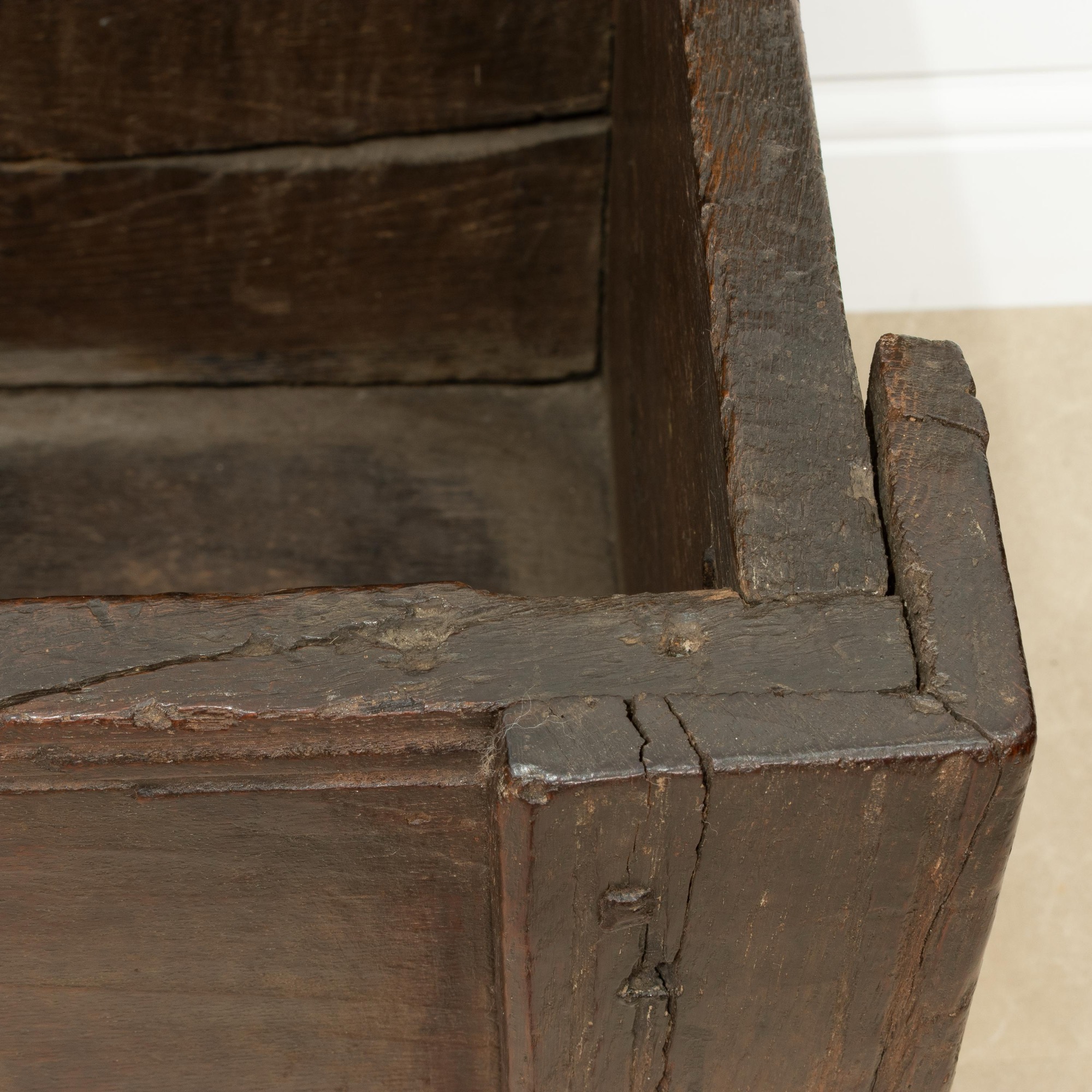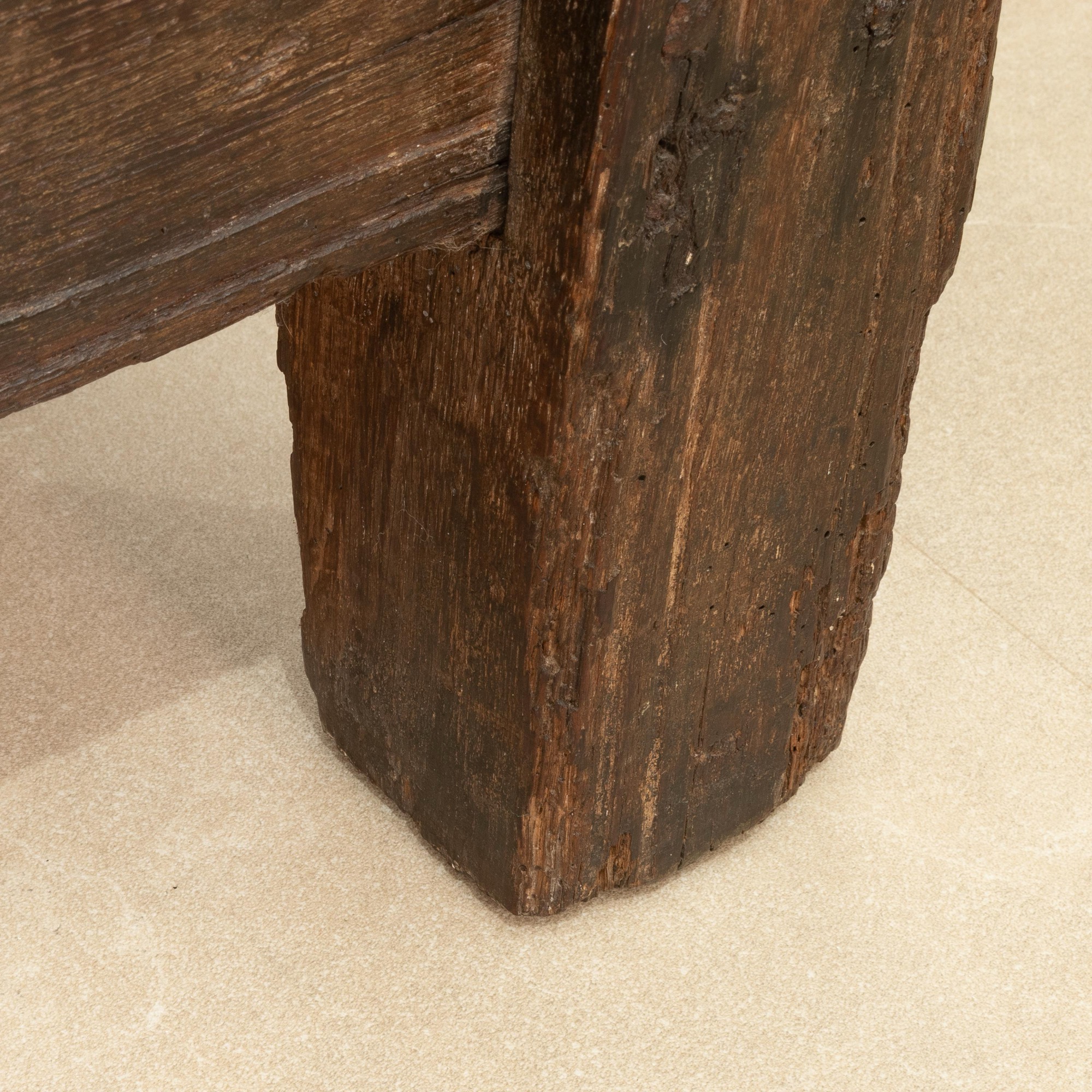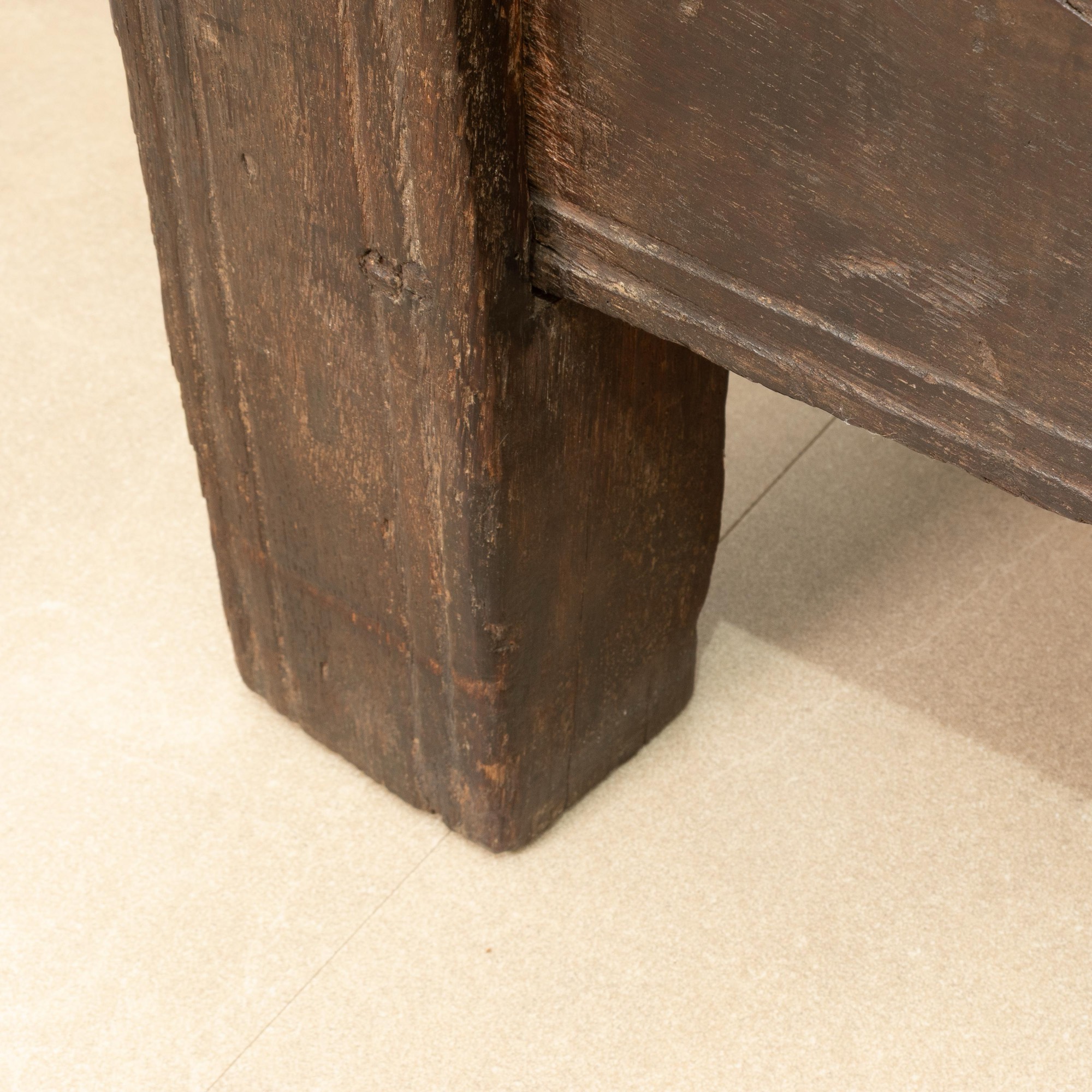A rare and innovative Tudor oak boarded chest, Welsh, circa 1500
REF: 4077
Having a wonderful one-piece lid with double line-incised edge, originally loose, the underside bearers having a primitive peg-end and location hole to the inner rear board, (one still present), the external iron straps added no later than the 18th century and probably earlier, the one-piece side boards, all horizontal, are set within partly hollowed-out rectangular-section stiles, allowing the base and all four side boards to be nailed in place whilst supported on substantial legs
The large boards used in the construction of this chest are testament to the availability of choice timber during the 15th and early 16th centuries. The innovative construction has also enabled the chest to remain in remarkable condition. Unlike boarded chest of similar date, the boards were not simply nailed together at the corners, with further reinforcement when required provided by additional iron work, sometimes added later. The base board rests securely in the bottom of the hollowed-out leg section, thereby preventing ground rot so often associated with 15th century boarded chests
Literature: See Richard Bebb, 'Welsh Furniture 1250-1950' (2007), Vol I, pp. 146 - 147. The author attributes this method of construction to the counties of Breconshire and Radnorshire. However, unlike examples attributed to Welsh manufacture this chest does not have an inward cut-away to the base of the stiles, nor any bold decoration. The author, does however, suggest plain examples were originally made for churches, ibid., p. 146
For a remarkably similar chest, dated to the 15th century, see the collection at Greyfriars, Worcestershire, NT 443376. Another, on display at Oak House Museum, West Bromwich, loaned from the V&A Collection, London, W.158-1921, is again of very similar appearance, with paired incised lines to boards and uprights, dated to 1200-1400, but of clamp-front construction
- Height 68 cm / 27"
- Width 127 cm / 50 "
- Depth 50 cm / 19 "
Category

